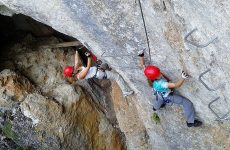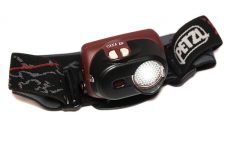
Climbing is fun and challenging sport that requires the use of various equipment such as ropes, carabiners, and anchors. These items can be expensive and difficult to replace, which is why it is important to retrieve them safely and efficiently after completing or retreating from a climb. In this article, we will discuss the essential steps and gear required for successful gear retrieval, including various types of equipment that you can use to retrieve your climbing gear.
Before You Climb
One of the most important steps in gear retrieval is to plan ahead. Before you start your climb, double-check your gear list to ensure that you have everything you need for gear retrieval. This might include a nut key, stick clip, or ascender, depending on the type of climb you are undertaking. Make sure that you have the necessary equipment for the specific climb you are planning to do.
Completing a Climb
When you reach the top of a climb, remove all gear from the route. Check carefully for any left-behind gear, such as quickdraws, slings, or carabiners. Pack the gear safely and efficiently in your backpack, ensuring that it is secure and won’t fall out during the descent.
Retreating from a Climb
There are many reasons why you might need to retreat from a climb, including unexpected weather conditions or an injury. If you do need to retreat, make gear retrieval a priority. If you are unable to retrieve all your gear, prioritize the most expensive or difficult to replace items. Develop a plan for gear retrieval before you start your descent, and communicate this plan to your climbing partners.
Gear for Retrieval
There are several types of gear that you can use to retrieve your climbing gear. These include nut keys, stick clips, and ascenders.
Nut Keys
Nut keys are used to remove nuts and other small pieces of rock climbing protection that have become stuck in the rock. To use a nut key, insert the end of the tool into the small space between the rock and the piece of protection, and then twist and wiggle the nut key until the piece of gear is dislodged.
Metolius Torque Nut Tool
The Metolius Torque Nut Tool is made of durable steel and has a ergonomic design that provides a comfortable grip. It also includes a built-in carabiner clip for easy attachment to your harness.
Black Diamond Wiregate Nut Tool
The Black Diamond Wiregate Nut Tool nut tool is made of lightweight aluminum and features a hooked nose for removing stubborn nuts. It also has an integrated wire-gate carabiner for easy attachment to your harness.
Stick Clips
Stick clips are a handy tool for climbers who want to protect themselves from potentially dangerous falls when clipping bolts that are high up on a climbing route. These devices work by allowing you to clip a quickdraw or other type of carabiner to the bolt from a distance, using an extendable stick. This can save you from having to make a risky move to reach the bolt or from having to climb above your last piece of protection to clip the bolt.
To use a stick clip, first, extend the stick to the desired length, and then attach your quickdraw or other carabiner to the end of the stick using the built-in mechanism. Once the carabiner is securely attached, you can then use the stick to clip the bolt from a safe distance.
Trango Beta Stick EVO Extendable Stick Clip
The Trango Beta Stick EVO Stick Clip is a versatile tool that can be used for stick clipping bolts or retrieving gear. It has a telescoping design that extends up to 6 feet and a lightweight aluminum construction. It also features a built-in wire-gate carabiner for easy attachment to your harness.
KAILAS Clip-up Stick Clip
The KAILAS Clip-up Stick Clip is a budget-friendly option for stick clipping bolts. It has a lightweight aluminum construction and a compact design that can be easily stowed in your backpack. It also includes a wire-gate carabiner for easy attachment to your harness.
Ascenders
Ascenders are used to climb up a rope to retrieve gear that is out of reach. These devices attach to a rope and allow you to climb up the rope using your leg power, while also providing a secure grip to prevent you from sliding back down the rope. Ascenders come in a variety of designs, with features such as ergonomic handles, safety catches, and one-handed operation.
Using an ascender requires attaching the device to the rope, with the rope passing through the cam mechanism of the ascender. Then, you use your legs to push against the rope and climb up, with the ascender sliding up the rope as you ascend. To descend, you simply release the pressure on the rope and allow the ascender to slide down the rope.
Petzl Ascension Ascender
The Petzl Ascension Ascenderis a popular choice for ascending ropes during gear retrieval. It has a comfortable molded handle and a chrome-plated steel cam that provides secure grip on the rope. It also has a safety catch that prevents accidental release.
Black Diamond Index Ascender
The Black Diamond Index Ascender is another popular option for ascending ropes. It has an ergonomic handle that provides a comfortable grip, and a trigger release for easy one-handed operation. It also has a stainless steel cam that provides secure grip on the rope.
Tips for Gear Retrieval
Here are some helpful tips for safely and efficiently retrieving your climbing gear:
- Before starting the climb, plan out the gear you’ll need for retrieval, including any specialized tools like nut keys or ascenders.
- Always double-check that you’ve removed all of your gear before leaving a climbing site.
- When using a nut key, ensure that you’re turning it in the correct direction to avoid damaging the rock or the nut itself.
- Practice using your stick clip at ground level before using it on a climb to ensure that you’re familiar with its operation.
- When using an ascender, make sure to attach it to the rope correctly, and use a backup knot or other safety device to ensure you don’t fall.
- Be aware of the weight of the gear you’re retrieving and consider using a hauling system if it’s particularly heavy or cumbersome.
- Take care when removing gear from the rock, as some types of protection can become stuck or cause rock damage if removed improperly.
- Always double-check that your ropes are properly coiled and stored before leaving the climbing site.
By following these tips, you can minimize the risk of injury or damage to yourself, your gear, or the rock surface!
Conclusion
Retrieving your climbing gear safely and efficiently is an essential part of climbing. By choosing the right gear, and practicing how to use it, you’ll feel more confident that you will be able to retrieve your equipment securely. Each climbing situation is unique, and the gear that works best for one climb may not be the same gear that works best for another. We hope this gives you a good idea of how to safely and confidently retrieve your gear, and continue to enjoy the thrill and challenge of climbing. Happy climbing!


